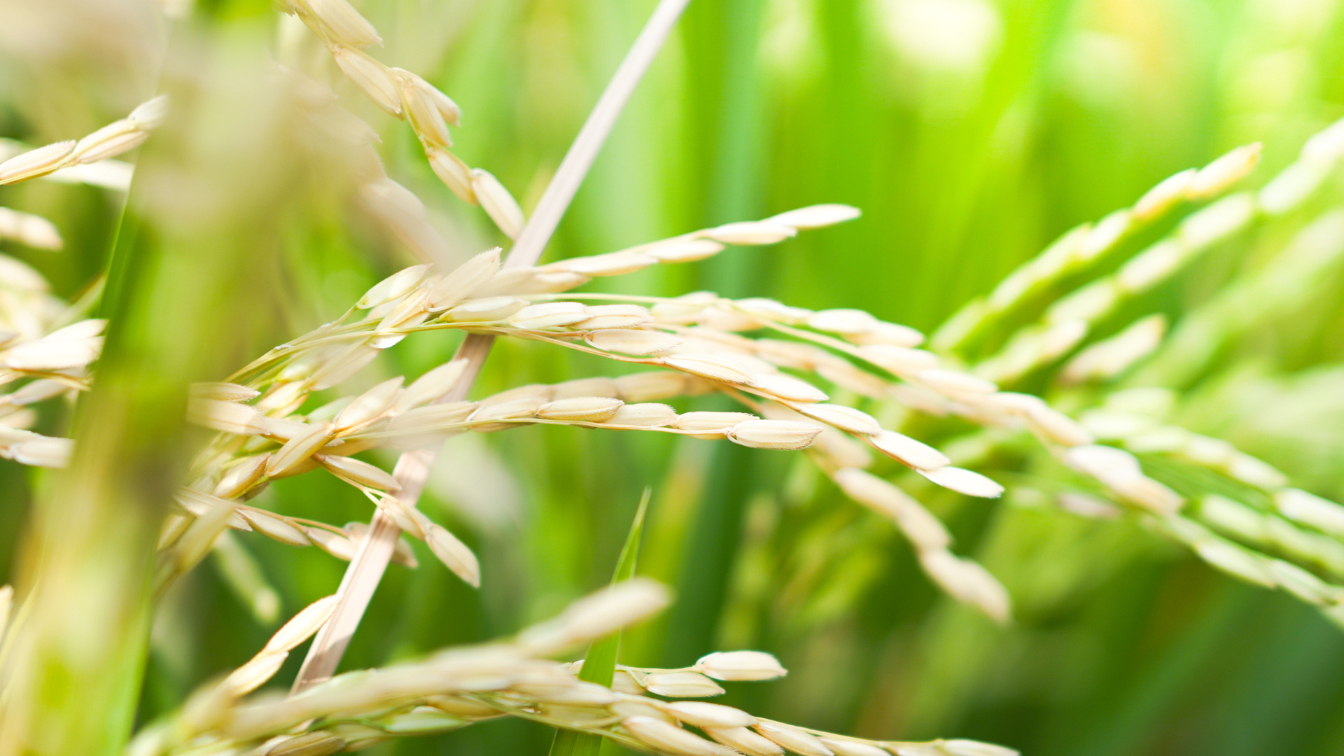J-STORIES - A research group at Hiroshima University has developed an eco-friendly next-generation LED. Instead of toxic rare earths and metals, they used rice husks to create minute semiconductor nanocrystals called “quantum dots” for use in displays.
The university is believed to be the first in the world to announce research results into the use of rice husks to manufacture LEDs. The use of quantum dots as semiconductor nanoparticles in displays and other devices is expected to become more widespread.
But there are problems: They contain toxic metals such as cadmium and lead. And the supply of rare earths and rare metals is unstable.
The university’s research results are expected to pave the way for safe quantum dots made from natural materials. At the same time, it provides an effective way to use the huge amounts of rice husks that farmers struggle to dispose of.
.jpg)
Quantum dots are light-emitting semiconductor microparticles several nanometers in diameter (one nanometer is one millionth of a millimeter). Due to their minute size, as well as wide and beautiful range of colors, it’s expected they will be increasingly used as light sources in wearable devices and other applications that require higher resolutions. According to one U.S. research firm, the market for quantum dots is expected to reach $8.6 billion by 2026.
Quantum dots contain cadmium, a metal that was once a massive pollution problem in Japan and the cause of “itai-itai disease” (cadmium poisoning). In the process of developing quantum dot LEDs that are free from such toxicity and can be produced safely and stably, the research team turned its attention to rice husks, a by-product that farmers struggle to dispose of. The research group used the silica that makes up approximately 20 percent of rice husks to produce quantum dots, and succeeded in creating a quantum dot LED that emits orange light.
.jpg)
Professor Kenichi Saito, who leads the university research group, told J-Stories that their goal is to increase the brightness of the light while adding other colors, such as red, blue, and green. According to Saito, if these rice husk-derived quantum dots can be mass-produced, they could be used as light-emitting materials in displays for more precise virtual reality headsets, as well as contact lenses and glasses that can show images. He says that they could even play a role in the development of hologram technology.
“I want to make something that will surprise the world,” said Saito. “Light can be used in many places and can do anything. Two or three decades from now, I want to have used quantum dots and quantum dot LEDs to bring about a world that we could never have imagined.”
.jpg)
Translation and Editing by Tony McNicol
Top page photo by HumbaFrame/Envato
For inquires about this article, please contact us at jstories@pacificbridge.jp
***
***
Click here for the Japanese version of the article.


![[Podcast] Japanese technology to supercharge human fertility (Part 4)](https://storage.googleapis.com/jstories-cms.appspot.com/images/1768443226894unnamed-5_smallthumbnail.jpg)

![[Podcast] Japanese technology to supercharge human fertility (Part 3)](https://storage.googleapis.com/jstories-cms.appspot.com/images/1766558713084place-for-scientific-research-2025-03-07-14-08-49-utc%20(1)_smallthumbnail.jpeg)

![[Podcast] Japanese technology to supercharge human fertility (Part 4)](https://storage.googleapis.com/jstories-cms.appspot.com/images/1768443226894unnamed-5_bigthumbnail.jpg)

![[Podcast] Japanese technology to supercharge human fertility (Part 3)](https://storage.googleapis.com/jstories-cms.appspot.com/images/1766558713084place-for-scientific-research-2025-03-07-14-08-49-utc%20(1)_bigthumbnail.jpeg)
![[Interview: Part 2] A digital approach to tackle child hunger in Japan with dignity](https://storage.googleapis.com/jstories-cms.appspot.com/images/1766130666509unnamed_bigthumbnail.jpg)
![[Podcast] Japanese technology to supercharge human fertility (Part 2)](https://storage.googleapis.com/jstories-cms.appspot.com/images/1765863548035unnamed-7_bigthumbnail.jpg)
![[Podcast] Japanese technology to supercharge human fertility (Part 1)](https://storage.googleapis.com/jstories-cms.appspot.com/images/1765440905082unnamed_bigthumbnail.jpg)
_bigthumbnail.jpeg)


![[Interview] When digital and physical worlds meet](https://storage.googleapis.com/jstories-cms.appspot.com/images/1747974430456unnamed-2_smallthumbnail.png)

![[Interview] How Japanese musician Grover turned his passion of ‘sound’ into a health-tech startup](https://storage.googleapis.com/jstories-cms.appspot.com/images/1746181078493R7__1407_smallthumbnail.jpg)


_smallthumbnail.jpeg)

![[Interview: Part 1] From nourishing souls to feeding the hungry](https://storage.googleapis.com/jstories-cms.appspot.com/images/1763695595492unnamed_smallthumbnail.jpg)

